Rue anemone, Thalictrum thalictroides, can dot the woodland floor with dainty white to pinkish white flowers in early spring. It is spring blooming but not always a spring ephemeral. It is also known as windflower or Anemonella thalictroides. It is a herbaceous perennial plant native to eastern North America.
Flowers
Inflorescence/Flower cluster:
Rue anemone, Thalictrum thalictroides, flowers grow singly or in clusters of 3-4 as an umbel on the end of its own unbranched stem. Note the leaflets/leaves just below the flower whorl. The flowers and leaves attach at almost the same place on the stem.
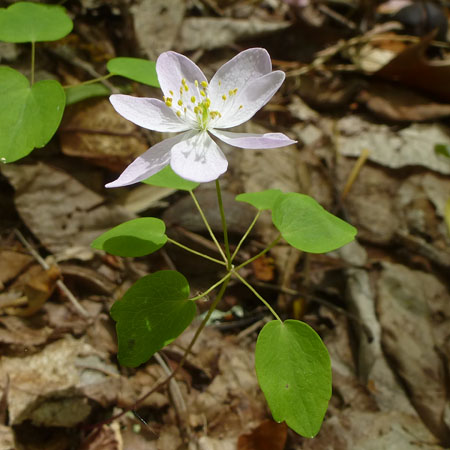
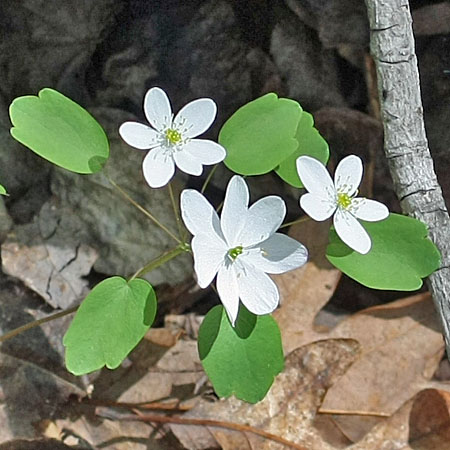
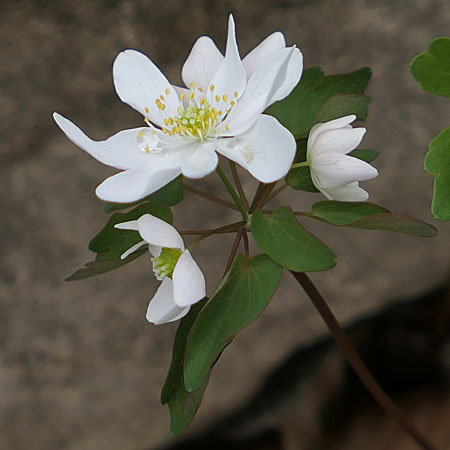

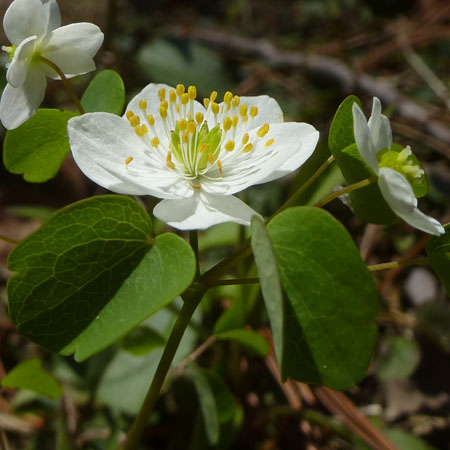
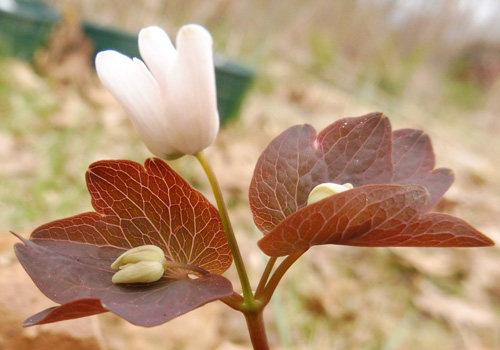
Individual Flowers:
The flowers are about a half to an inch across. There are no petals. The showy parts are sepals. There are 5 to 10 (usually 5 or 6) white to pinkish white sepals that are rounded or sometimes notched at the tips. When there are more sepals, the sepals tend to be narrower. Inside the sepals are many stamens with yellow anthers. In the center are 6 to 15 separate pistils. The flowers offer pollen but no nectar to their pollinators
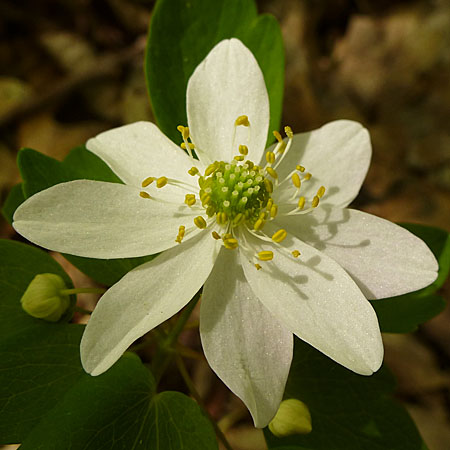
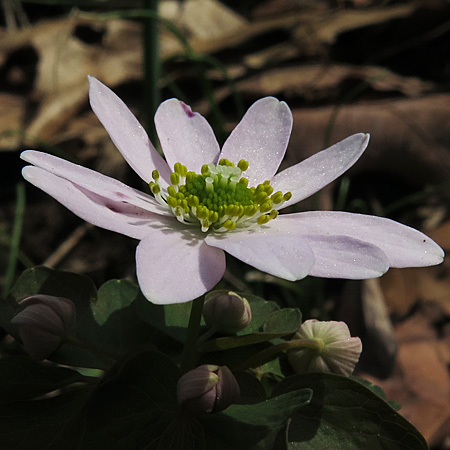
A close up of the center: In this flower there are 6 separate pistils (carpels). Also, 3 of the many stamens are maturing with extended filaments and yellowish anthers. The green structures at the base of the pistils are immature anthers.
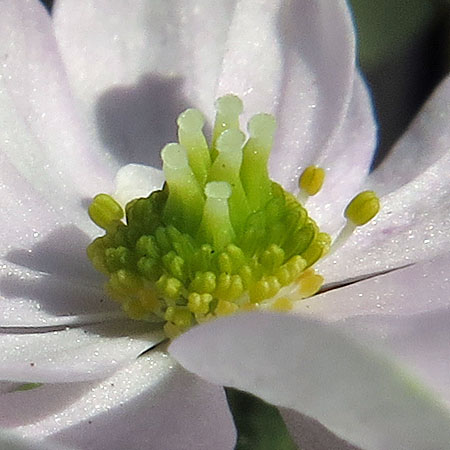
Flower bud: The young red leaflets are wrapped around the flower bud for protection
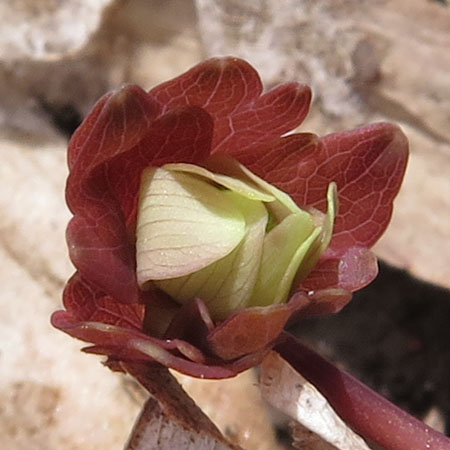
A view of the back of the flower: Normally, one would see the sepals, however, in rue anemone, the showy parts are the sepals.
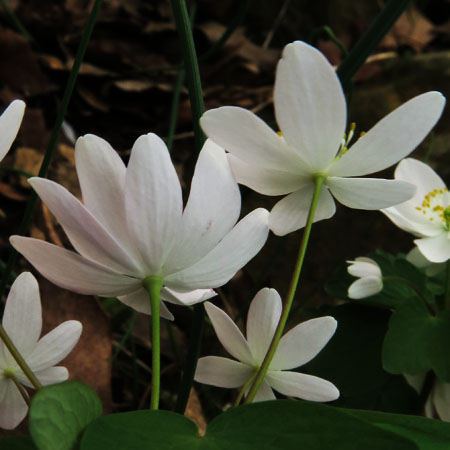
In this photo the pale veins in the sepals are noticeable.
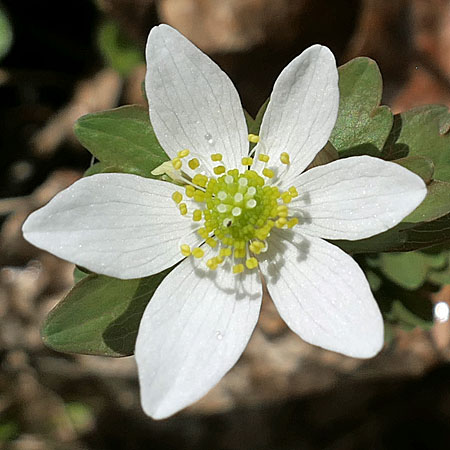
Flower with a sparkling delicate texture.
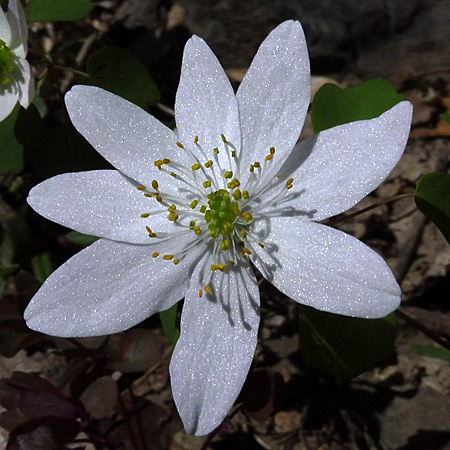
Flower - another view.
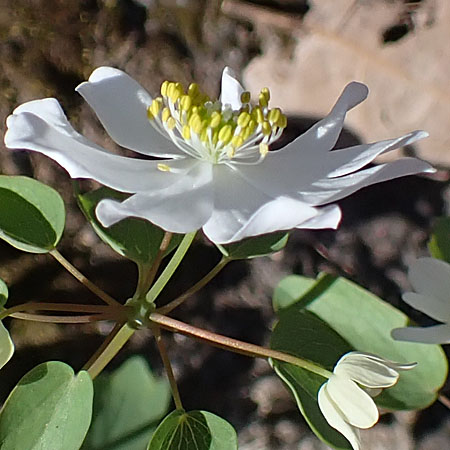
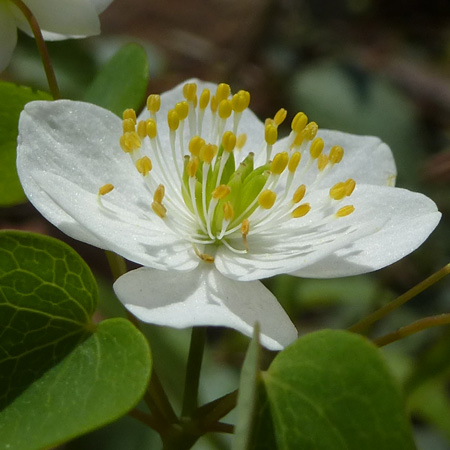
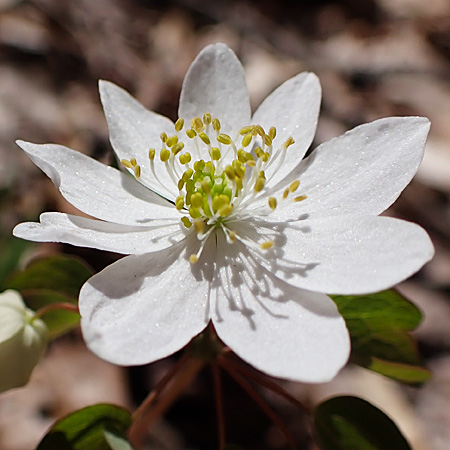
Some of the flowers in the wild are more pinkish. Note in the flower centers, the pistils are whitish and the surrounding green is immature green anthers and the mature stamens with yellow anthers are on the edges.
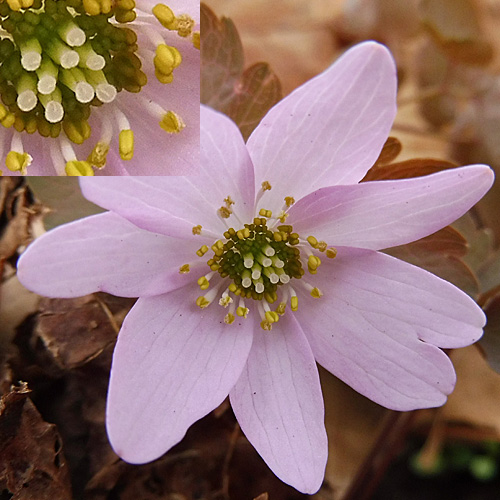
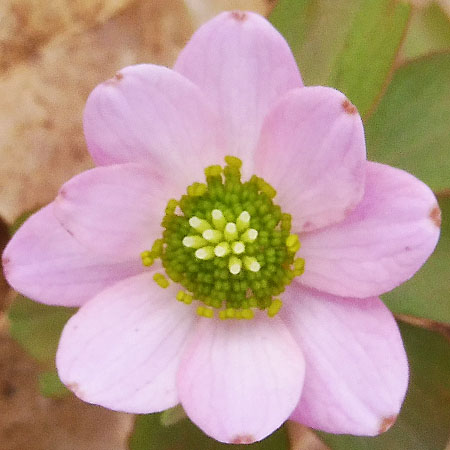
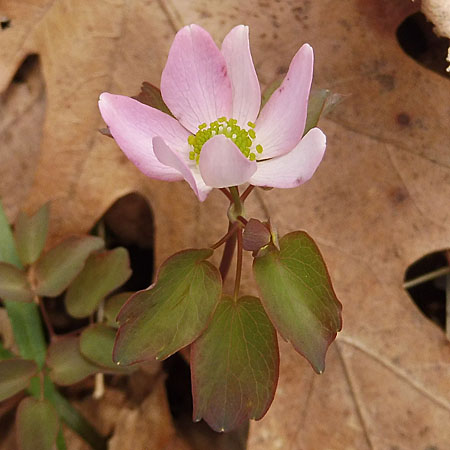
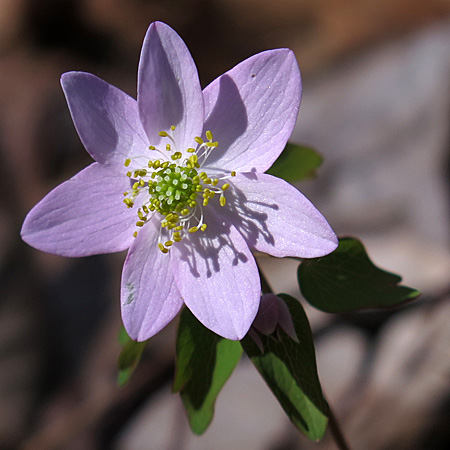
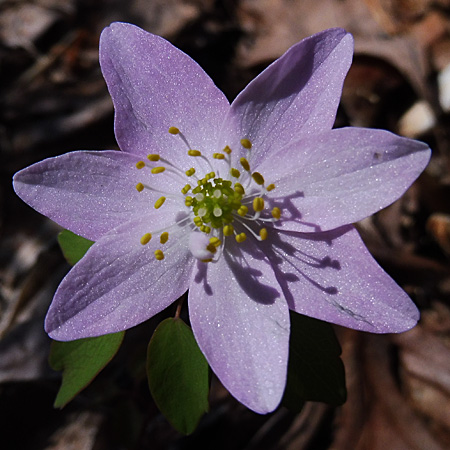
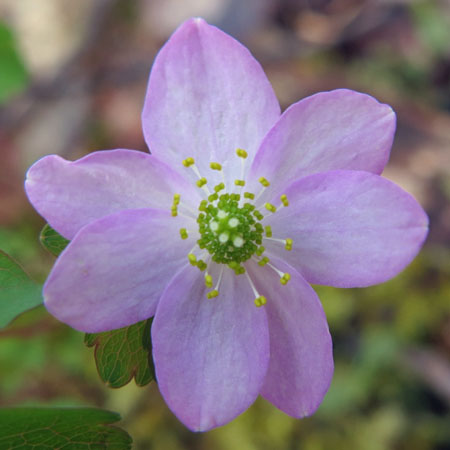
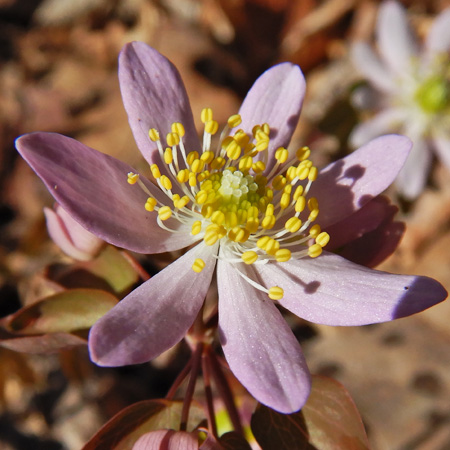
Fruit
Fruit:
Developing from the ovaries are the fruits that are less than a quarter inch long and ribbed.
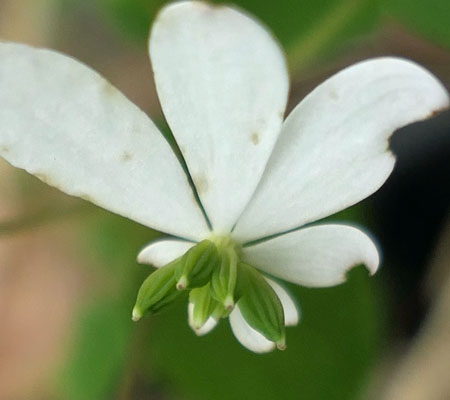
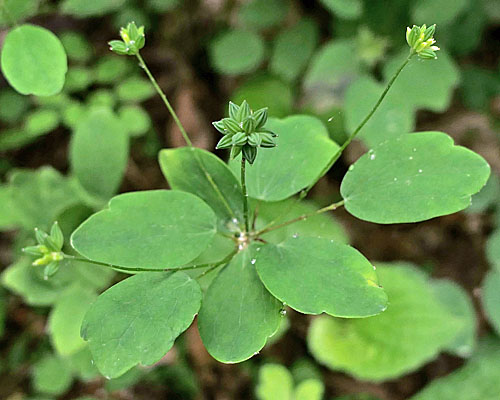
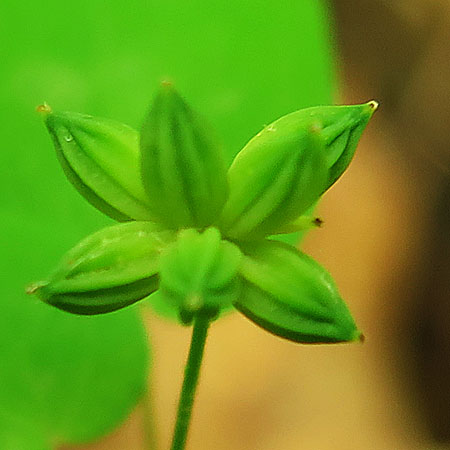
Leaves
Leaves:
Cauline (stem) leaves: The only leaves on the stem are those behind/below the flowers.
The whorl of leaves are actually a whorl of leaflets. There are 2 compound leaves that are opposite and each compound leaf has 3 (ternate) leaflets. The are no leaf stalks, so the compound leaves are sessile so that there are 6 leaflets in a whorl. The leaflets are technically called bracts. The flower stalks and the leaves all grow from almost a common point (second photo below).
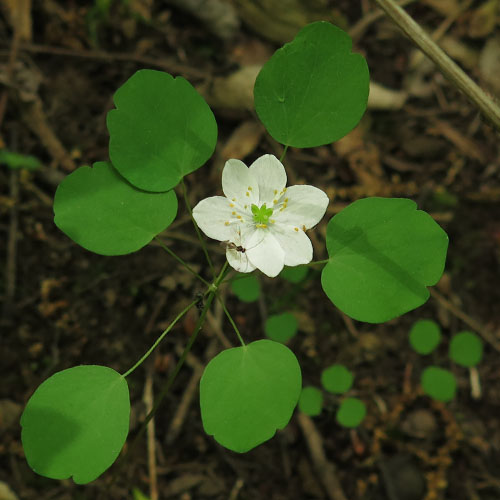
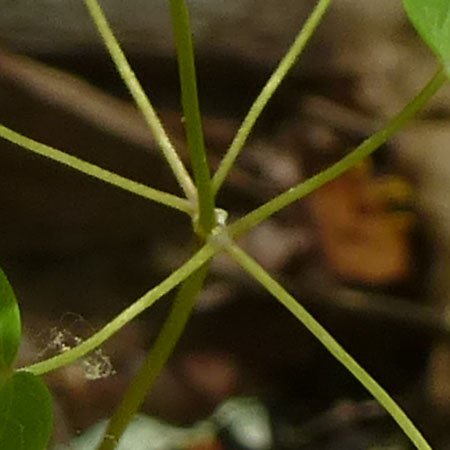
Basal leaves: The basal leaves are twice compound with 3 groups of 3 leaflets.
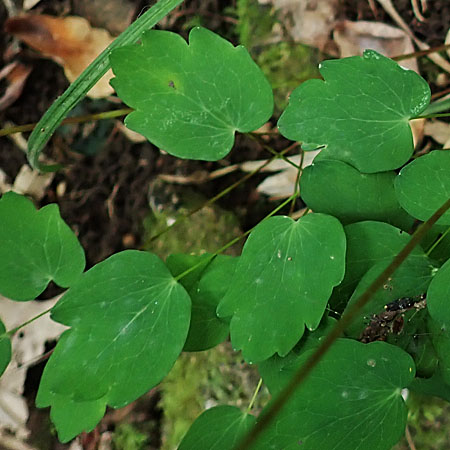
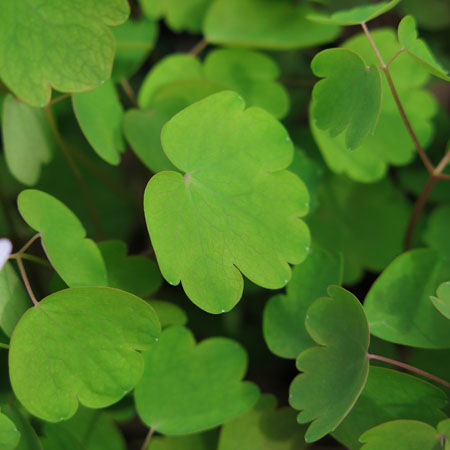
The leaflets of both the cauline and basal leaves are somewhat variable. Shape wise they are nearly round or broadly ovate to obovate or oblong. The tips of the leaflets are usually 3 lobed with lobes shallow with mostly rounded or with blunt tips. When the leaflets are young, they tend to be reddish as seen in some of the photos above.
Plant & Habitat
Rue anemone plants are herbaceous and perennial and grow to 5 to 10 inches tall in deciduous woods. Flower stalks and basal leaves grow from underground tubers. Tubers are modified stems for underground food storage for the plant. A mature plant may produce one to several flower stalks and several basal compound leaves. When the weather is too hot and dry, the plants will go dormant. If the weather is favorable the plants will persist into the summer.
This photo shows a plant with a flower stalk and an adjacent basal leaf.
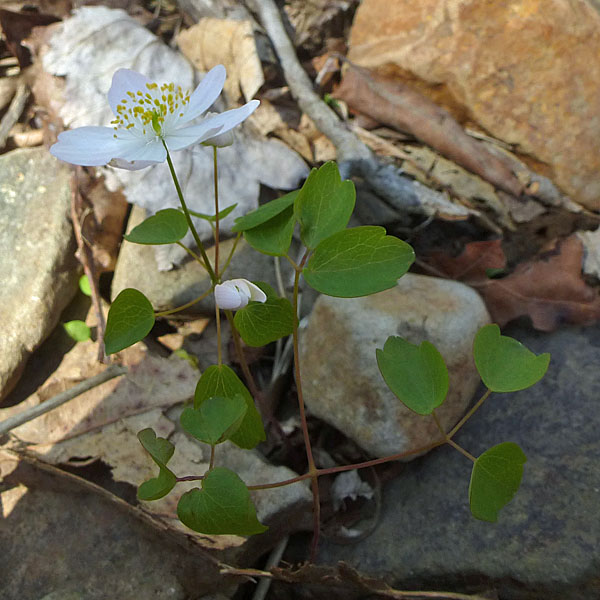
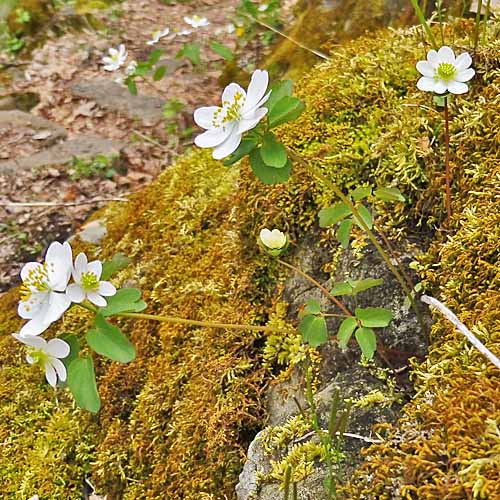
 The plants grow singly or sometimes in groups. This is the largest population we've seen. It was in the woods of the Sourlands, NJ. Rue anemone, Thalictrum thalictroides is reasonably common. It is S4 (Apparently Secure) in NJ.
The plants grow singly or sometimes in groups. This is the largest population we've seen. It was in the woods of the Sourlands, NJ. Rue anemone, Thalictrum thalictroides is reasonably common. It is S4 (Apparently Secure) in NJ.
Did you know that there is the "false rue anemone" (Enemion biternatum)? It is not native to NJ but it is native to the US Northeast. It has only 5 petals, and has more cauline leaves below on the flower stalk and the leaflet lobes are deeply cut.
Text by Millie Ling and all photos by Hubert & Millie Ling. Photos: cultivation & Sourlands, Cushetunk Mountain Preserve (Hunterdon County); Muckshaw Pond Preserve, Whittingham Wildlife Management Area (Sussex County) as well as other places. Flowers taken in April & May.
Additional information / References
Additional information / references:
- Description: https://anps.org/2021/04/11/know-your-natives-rue-anemone/
- Description: https://www.minnesotawildflowers.info/flower/rue-anemone
- Rue Anemone and a Bee Fly https://the-natural-web.org/2018/04/29/rue-anemone-and-a-bee-fly/
- Description: https://www.missouriplants.com/Thalictrum_thalictroides_page.html